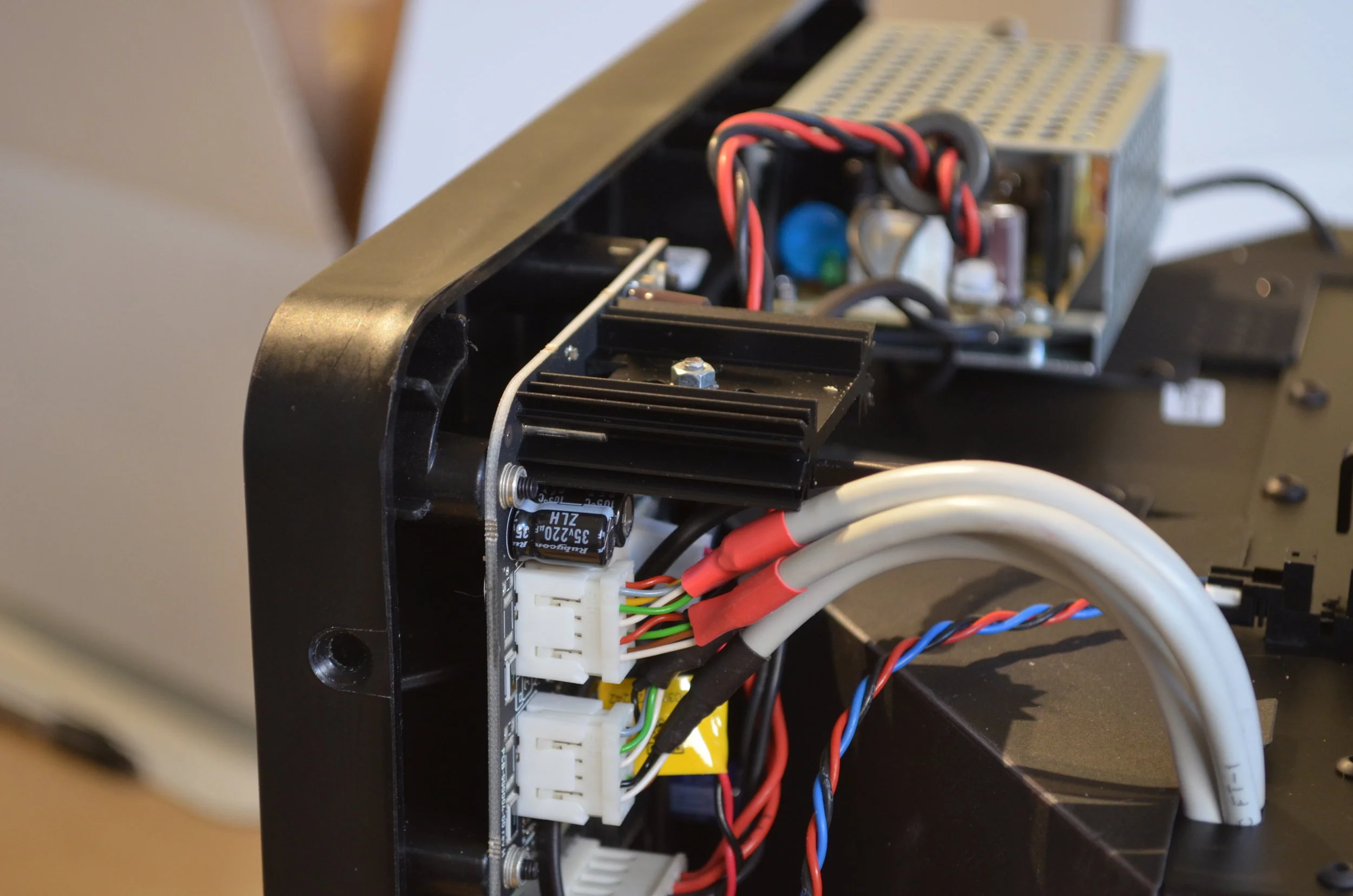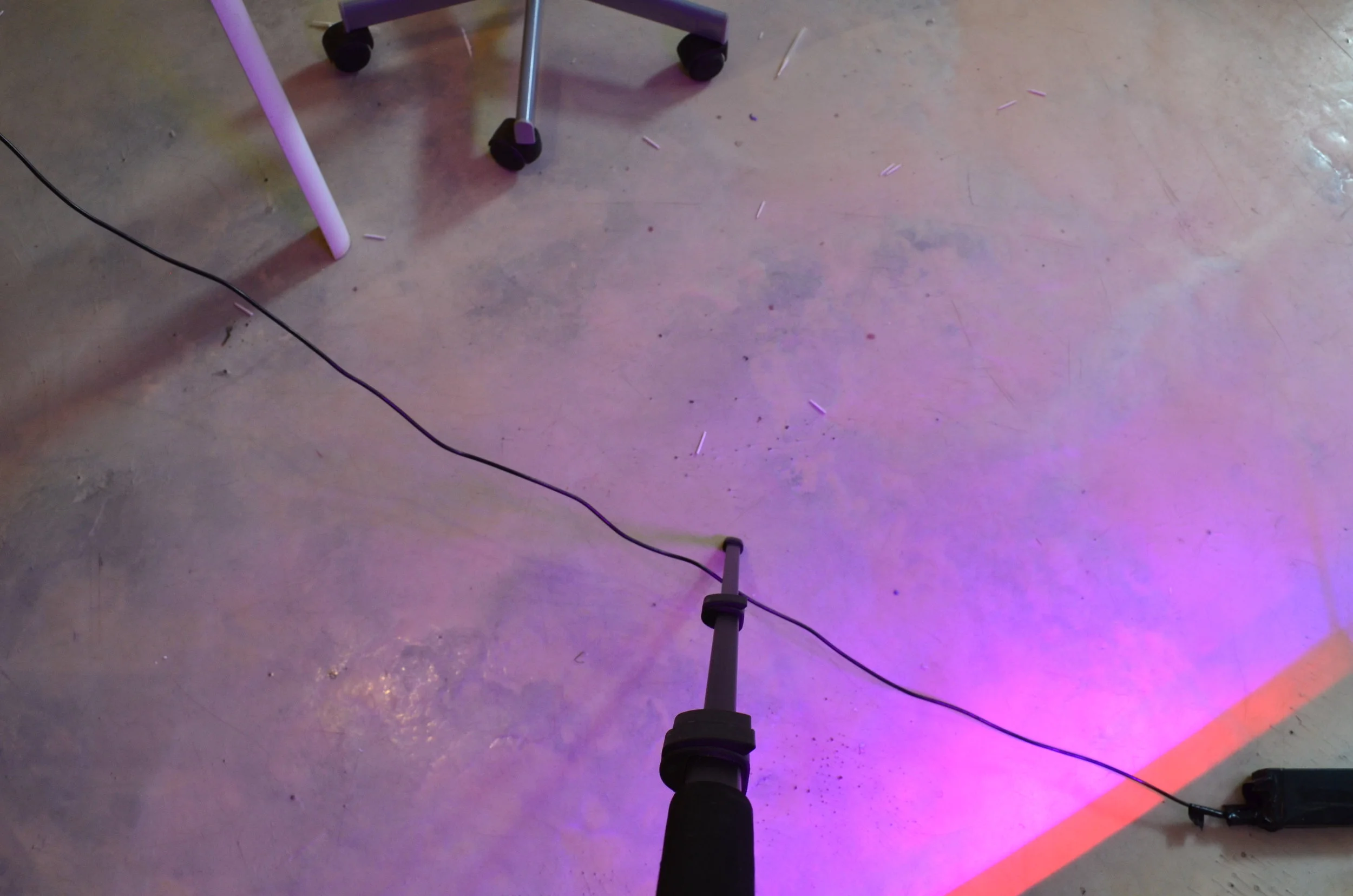Design:
Machines for Moving:
Solutions from Down the Supply Chain:
Branded:
- There's much to be said about the obsession with "authenticity" - perhaps we've been spoon-fed so much advertising simulacrum that we long for something with the scent of the genuine. But with so little left untouched by marketing ploys, it seems like only what is over can remain authentic in its fixed-ness. All else is at risk of rebooting or rebranding: actions that fling a once solid sense of place, time and tone into some unfamiliar configuration. The dead-ended brand is a sort of psychological home; a mental space that we can return to and count on to provide us a certain feeling time and time again. So maybe it's not surprising that the bland, brand new luxury apartment market would attempt to imply real world origins, some anchoring in past and place. Often these developments are given pseudo-historical, implied-industrial names that reference what was once there (or could have been there) similar to how suburban subdivisions are named for the natural landscapes they displace. In this case, it's a set of incredibly expensive NYC apartments ($16,000+ per month) with a salvaged Pearl Paint sign adorning the lobby. It's an object-in-context that begs two very different readings: either a tribute to the artists and neighborhood histories of NYC, or gentrification's grim trophy of another community converted. The fact that cultural production is what can make a neighborhood "hot" in the first place makes turning an art supply store sign into set dressing for ultra-expensive apartments beyond the reach of most creative folks feels like a very tone-deaf gesture, if not downright salting the wound.
Engineering Communities:
- The "Maker Movement" was supposed to enable the masses to tinker, tear down and rebuild the world of technology around them; a democratization of the digital means of production stretching from website to widget. While many successful startups have emerged from the quest to bring precise, powerful lab and shop equipment into the home and small business, most of these innovations have ended up in the homes and garages of engineers rather than boosting the capabilities of the average person. For a true renaissance of invention and repair to happen at a grassroots level, a more complete ecosystem is required. One essential element of such an ecosystem is making tools available to as many people as possible. Maker Spaces like TechShop provide complex, big-ticket tools for community use, but with membership fees that are beyond the reach of many. An article from the Star-Tribune highlights a new tool library project in St. Paul that lets people check out a wide variety of hand and power tools for $55 per year.
More next week.
Design:
Building Things:
- Voodoo Manufacturing, which produces plastic parts on demand via a large network of 3D printers has added a robotic tender for their factory floor, removing prints so that new jobs can begin. Their post states their desire to take on production volumes of 10,000 plastic parts or more, which has mostly been the domain of injection molding. This is ambitious but not entirely practical: energy efficiency for injection molding is vastly superior to 3D printing and it's much easier for a manufacturer to add production capacity with molding machines instead of a whole hive of printers. Voodoo seems to primarily use FDM processes so they still have the problems of surface finish and limited material selection: ABS, PLA, Nylon, and a handful of others. Anyone who has taken a product through UL or other regulatory requirements knows a more complete library of polymers to draw from is essential, and that consistency of parts needs to be higher than what current FDM can provide. The case studies on their website show mostly simple, single piece plastic widgets like keychains or trophies along with a couple of niche hobby products where product liability risk is low. The bottom line is that while they're doing some novel work on advancing print-centric production models, companies like Foxconn or The Rodon Group shouldn't be worried about disruption to their business model anytime soon.
- A more balanced, nuanced take on how additive manufacturing will supplant or complement traditional manufacturing from Dávid Lakatos at Formlabs focuses on how additive enables mass-customization rather than pitting the approach as a head-to-head competitor with injection molding across the full range of product needs.
Body/Image:
- An article on artists developing counter-surveillance clothing, like a scarf for subverting facial recognition tech and burkas that mask the heat signatures drones use for targeting. In both cases the counter measures are simple, cheap, and easy to manufacture. In a world of blue-chip paintings viewed more as investments than aesthetic objects, it's nice to be reminded that art can be subversive, practical, and beneficial to the masses all at once.
Branded:
- The super-luxury phone market hasn't developed as planned. Vertu (maker of $6,000 phones) sold once again after further stumbles, and Sirin Labs (maker of $13,000+ phones) is laying off staff and attempting a pivot after reporting sales of $10 MM since launching their product line (Sirin Labs has raised $97 MM to date). There's obviously a market for high-price luxury goods across a broad range of goods, from handbags to cars. We would argue that what both of these companies did wrong is not picking the wrong market, but rather misunderstanding how luxury brands need to look, feel, and function in order to command their (arguably absurd) mark-ups. It's not actually about the features (Balmain jeans have the same number of pockets as Levi's), it's about the aura and origins of the brand itself. If you compare the website of Sirin Labs or Vertu to established luxury brands in other product categories, the tech-industry temptation to lead with features becomes clear. But leading with features is to argue for value rooted in quality or utility, where luxury lines presume a high value by virtue of invisible metrics like provenance. Trying to talk you into the genuine luxury of something is akin to telling everyone how cool you are: It doesn't work and serves only to undermine the message. Also, while not a luxury brand per se, Apple charges a fair amount for their top line products and has brand cache and build quality that creates a high bar for would-be luxury phone makers to clear with enough space to seem notable.
Engineering Communities:
- The ad-hoc power networks known as microgrids that are driven by solar panels and use pay-as-you-go models have been deployed all over the world and often viewed as a solution for places where traditional infrastructure is lagging behind. Even if your country has a robust, centralized power grid, the promise of energy independence on a local level is attractive. Communities in the U.S. are getting involved with their own microgrid projects; an example of "reverse innovation" where initiatives originally designed for developing countries finds adaptation and usage in the wealthiest nations. In our opinion getting to a better future will require more DIY and independent, community driven projects like these, which can be implemented quickly compared to initiatives at the top levels of government vulnerable to rollbacks and politically driven funding battles.
More next week.
Design:
- International Women's Day was this past Wednesday, and this report that shows how the number of women in design declines as the career arc continues: from 67% female at the Junior Designer level, dropping to 39% at the Leadership level. This echoes what is seen in certain STEM professions as well- it's often not a pipeline problem as much as it is a retention/promotion problem. Willoughby, the design firm that put together the presentation based on AIGA design survey stats has their own commentary on why the wage and seniority gap exists, but we don't think extrapolating from their internal anecdotes is wise. There's a lot of work to be done inside and out of the design industry when it comes to equality, representation and ethical practices.
Work-Life:
- Stories of microdosing various illicit drugs to boost focus or creativity have been coming out of Silicon Valley for awhile. What is new and warrants some exploration is how workplaces should deal with microdosing of now (in some places) legal marijuana. While there might be a knee-jerk response to say that obviously such substances should be banned in the workplace, the arguments against are not so clear cut. Generally offices tolerate or even encourage caffeine to boost productivity. U.S. workers and students consume a huge amount of Adderall (a prescription amphetamine) every year, and anti-anxiety drugs help many to meet the work day with reduced stress and higher productivity. Substances and labor have intersected (legally, illegally, formally and informally) and where problems arise, there tends to be an underlying workplace or management environment that is unhealthy: abusively overloaded workers can turn to stimulants to keep up with an inhuman pace, beers-after-work can transform quieter, chronic harassment into something louder and more acute. In other words personal and organizational responsibility both figure into whether chemistry in the workplace helps or harms.
- Architects attempt to build workplaces that improve employee health by design.
Communication:
Solutions from the Down the Supply Chain:
Our Weird Future:
More next week.




